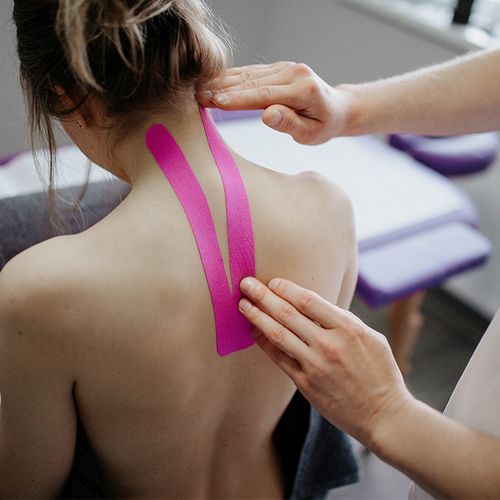Contrary to popular belief, an injury or accident is hardly ever the only cause of chronic pain-be it a backache, throbbing knee or stiff neck or shoulder.
Surprising: Chronic pain generally results from lifestyle habits, such as the way we breathe, stand, move or hold tension in our bodies. These habits involve patterns of physical stress-expressed as muscle tension that either can be the cause of pain or can turn injuries into long-standing problems.
For example, someone with a back injury may find that it's more comfortable to stoop forward slightly or lean to one side. Even when the original injury is healed, the body position can become a habit--and cause excessive muscle stress and pain.
Know Your Body
If you suffer any type of chronic pain, it's essential for you to develop a heightened awareness of how your body feels...recognize physical habits that cause muscle tension...and move in ways that enhance flexibility and comfort. Even if you have severe chronic pain that requires other treatment, such as medication, the strategies described in this article also may be used to promote healing.
My advice…
Step 1: "Scan" your body. Yoga, meditation and many other relaxation techniques recognize that simply observing your body's sensations without judgment can often encourage your body to spontaneously relax. When we worry about pain, we unconsciously tighten our muscles. The key is to accept whatever you feel.
Solution: When you are in bed at night, or relaxing on a sofa during the day, start by observing the sensations in your feet, then gradually travel up your entire body. Just observe your sensations. While you may feel momentary discomfort as you become aware of areas of tension, this tension will gradually dissipate, leaving you feeling more relaxed both physically and emotionally.
Step 2: Practice breathing deeply. The diaphragm, located just below the lungs and heart, is a large muscle responsible for about 75% of the work involved in breathing.
Interesting fact: Because the diaphragm is attached via connective tissue and muscles to the low back and hips, tension in the diaphragm can contribute to low back pain. When the diaphragm does not work optimally-contracting and releasing fully-secondary respiratory muscles in the upper torso must kick in to improve breathing. This contributes to upper torso fatigue and pain. People whose diaphragms are contracted and rigid tend to breathe shallowly. They are known as "chest breathers."
Solution: To relieve muscle tension, practice diaphragmatic breathing. As you breathe in this way, you will notice your breath becoming softer, deeper and slower. What to do…
- While sitting or lying on your back, put one hand on your chest and the other on your stomach.
- Slowly inhale through your nose—or keep your lips slightly parted and breathe slowly through your mouth.
- If you notice that your chest is expanding, focus more on breathing into the belly." Your stomach should rise more than your chest with each breath.
Practice diaphragmatic breathing as often and for as long as you like. The more you practice, the more it will become your preferred way of breathing.
Helpful: If you're not sure that you are breathing in a relaxed, fully diaphragmatic way, count the number of breaths you take in one minute. If you're breathing more shallowly than you're capable of doing, you may take as many as 11 to 20 breaths a minute. If you're breathing deeply and diaphragmatically, you will take as few as four to 10 breaths a minute.
Step 3: Work on body alignment. As a result of years of sedentary living, most adults have poor body alignment. Since we stand and sit a great deal of the time, it is particularly important to improve alignment in these postures.
Interesting fact: Improving alignment isn't about squaring back your shoulders and being stiff. It's about using your body in more comfortable ways.
Solution: A few simple steps can help improve the way that you stand and sit, reducing pain and fatigue. Examples...
- Bend your knees slightly when standing. It reduces stress on the low back.
- Keep your weight distributed evenly over both legs when standing—and keep both feet pointed in the same direction, instead of turning them in or out.
- When walking, roll from heel to toe, pushing off through the ball of the foot and keeping the weight evenly distributed between the inside and outside of the foot.
- When you get in and out of a chair, bend fully at the knees and hips, keeping your torso relaxed and straight.
Step 4: Stretch your body. Few move enough of their muscles regularly to stay limber.
Interesting fact: Certain animals, such as cats, stretch their whole bodies each time they get up, which helps keep them limber.
Solution: Spend 15 to 30 minutes daily fully stretching your body. You can do this through a formal discipline, such as yoga, or through an activity such as free-form dancing. Put on some music you enjoy, close your eyes and move to the beat, freeing up every stiff muscle. Or simply lie on the floor and stretch in any way that feels good.
Step 5: Release body tension. To reduce chronic pain, it is important not only to pay close attention to your body and recognize muscle tension as it occurs, but also to let it go whenever you can.
Interesting fact: Once people learn how their bodies should feel, they're better able to make other physical changes that reduce muscle tension.
Solution: Don't ignore muscle tension. Learn how to move more "intelligently-using minimum effort to achieve maximum results.
Examples: Grip your car steering wheel less tightly...notice whether you tense your muscles when having a stressful conversation or work long hours at a desk. Then try to relax a little bit. The more you relax, the less pain you will have.
